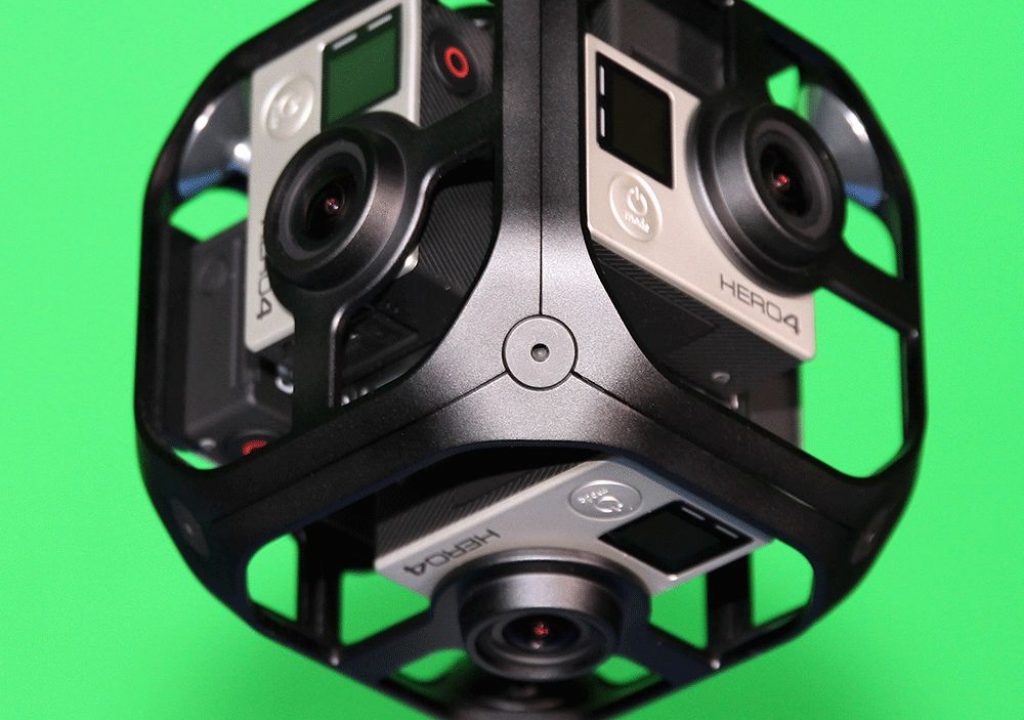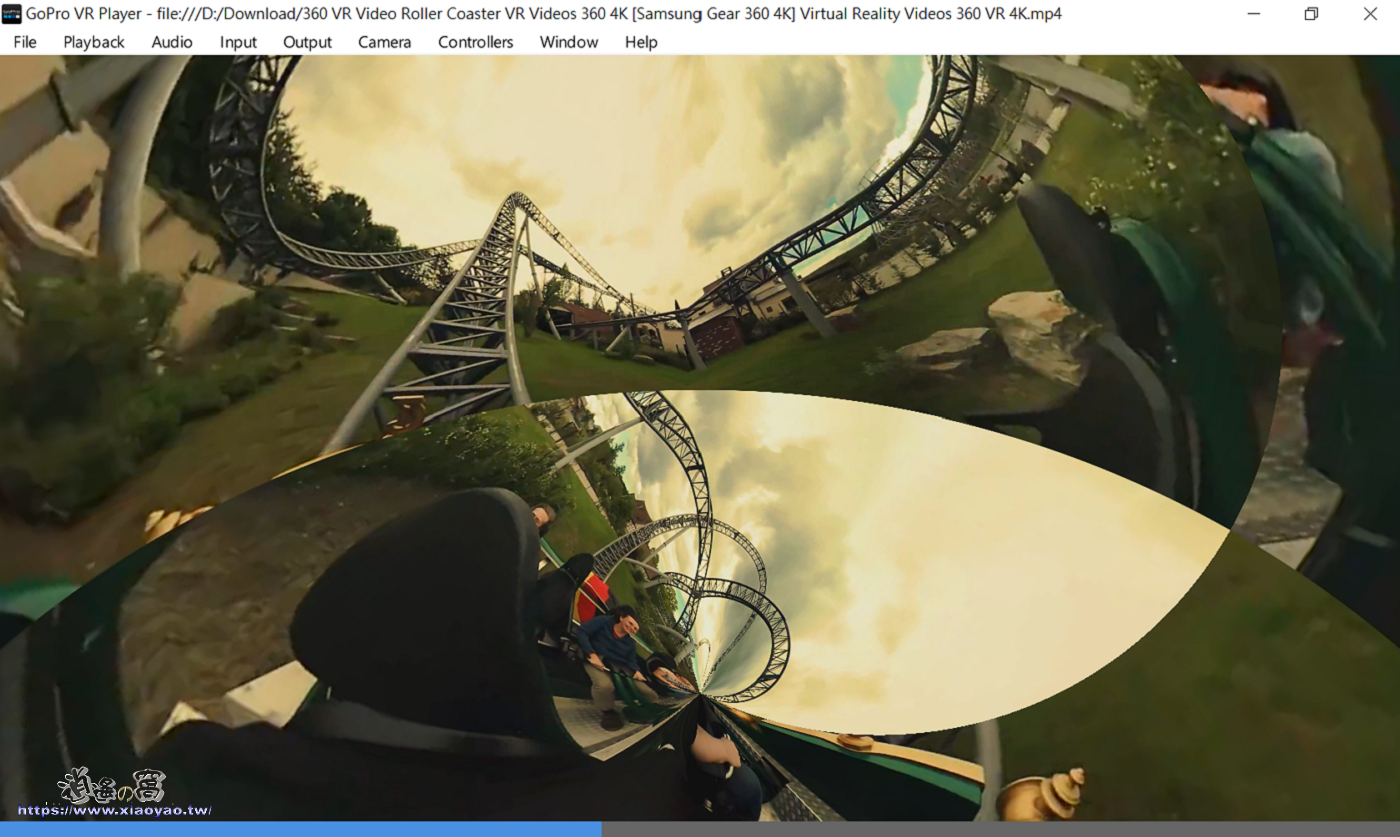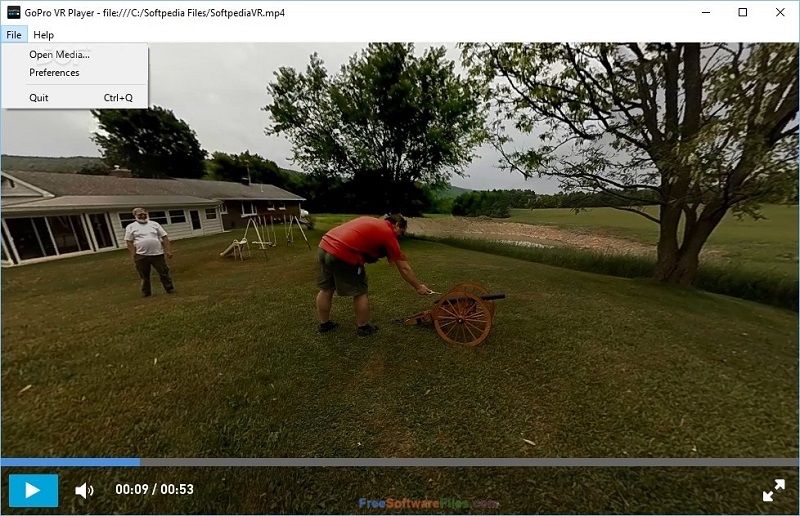
- #GOPRO VR PLAYER BACKEND ANDROID#
- #GOPRO VR PLAYER BACKEND SOFTWARE#
- #GOPRO VR PLAYER BACKEND CODE#
- #GOPRO VR PLAYER BACKEND PROFESSIONAL#
Again, the solution infrastructure is not limited to this particular brand of camera.
#GOPRO VR PLAYER BACKEND SOFTWARE#
The left image captures 180 degrees of the field of view, and the right image captures the other 180 degrees.įor this post, we chose a typical midlevel camera (the Ricoh Theta S), and used a laptop with open-source software ( Open Broadcaster Software) to encode and stream the content. The figure above illustrates a single capture from a Ricoh Theta S in monoscopic 2D.
#GOPRO VR PLAYER BACKEND PROFESSIONAL#
Second, if you look at most consumer-level cameras that provide live streaming ability, and even many professional rigs, there are at least two lenses or cameras at a minimum. We explicitly chose to focus on this format, although the infrastructure is not limited to it. Where can you start from a simple and effective point of view, that enables you to build out a fairly modular solution and test it? There are a few areas we chose to be prescriptive with our solution.įirst, monoscopic 360-degree video is currently one of the most commonly consumed formats on consumer devices. The challenge for any creative thus becomes a tradeoff between immersion features (degrees of freedom, monoscopic 2D or stereoscopic 3D, resolution, framerate) and overall complexity. When you look at VR devices with rotational and positional tracking, you naturally need more than an ability to interact with a flat plane of video. The ability to interact passively or actively with the content brings with it a further level of immersion. How does immersive media work?Īt its core, any flavor of media, be that audio or video, can be viewed with some level of immersion. We’ll talk more about that in the next section. It’s also worth noting that your playback device should support projection of your input stream.


#GOPRO VR PLAYER BACKEND ANDROID#
You’re going to generate HTML5-compatible video (Apple HLS to be exact), but there are many other native iOS and Android options for consuming the media that you create. A camera/capture device capable of encoding and streaming RTMP video.PrerequisitesĪs a side note, you’ll also need a few additional components to take best advantage of the infrastructure: If you experience any issues or would like to suggest an enhancement, please use the GitHub issue tracker. We’ve also provided a self-paced workshop, from AWS re:Invent 2017 that breaks down this architecture even further.
#GOPRO VR PLAYER BACKEND CODE#
This GitHub repository includes the source code necessary to follow along. We step you through deployment of the solution and how the components work, as well as the capture, processing, and playback of the underlying live and on-demand immersive media streams. In this post, we describe the reference architecture we created to solve this challenge, using Amazon EC2 Spot Instances, Amazon S3, Elastic Load Balancing, Amazon CloudFront, AWS CloudFormation, and Amazon CloudWatch, with open-source software such as NGINX, FFMPEG, and JavaScript-based client-side playback technologies.

We set out to build a solution that could support both live and on-demand events, bring with it a high degree of scalability, be flexible enough to support transformation of video if required, run at a low cost, and use open-source software to every extent possible. Which brings us to the topic of this post. All of these scenarios contain one lowest common denominator: video.

VR has ushered in convenient and low-cost access for consumers and businesses to a wide variety of options for consuming content, ranging from browser playback of live and on-demand 360º video, all the way up to positional tracking systems with a high degree of immersion. Looking at consumer trends, the desire for live and on-demand immersive video is fairly self-explanatory. It soon became apparent that while the VR ecosystem is large in both scope and depth of types of workloads (gaming, e-medicine, security analytics, live streaming events, etc.), many of the workloads followed repeatable patterns, with storage and delivery of live and on-demand immersive video at the top of the list. With the explosion in virtual reality (VR) technologies over the past few years, we’ve had an increasing number of customers ask us for advice and best practices around deploying their VR-based products and service offerings on the AWS Cloud.


 0 kommentar(er)
0 kommentar(er)
